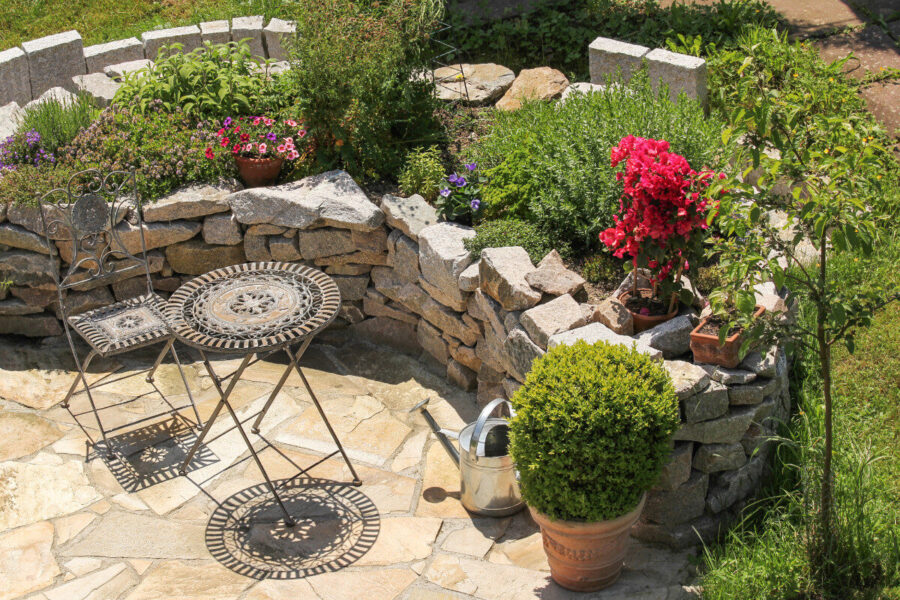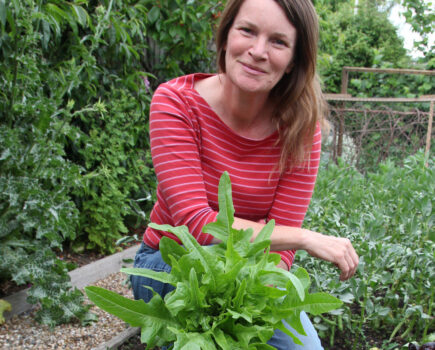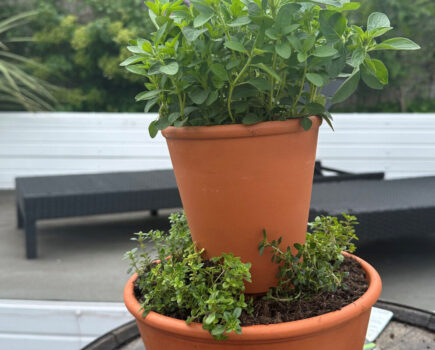Editor and resilient gardening expert Kim Stoddart explains how to make best use of this fantastic, and often free to source natural material
I first started really experimenting with rocks, gravel and stone when I was on my ‘gardening for free’ mission for The Guardian newspaper about 12 years ago. As I was on a no-cost gardening adventure I had to figure out how to improvise when building raised beds, pathways and such like with materials I could safely find, salvage or do swapsies for. It very much involved pondering everyday, often unloved or waste items in an entirely new and useful light.
As I was playing with seed saving, mulch and different types of compost-making, having fun problem solving and bartering like a medieval peasant, I found myself increasingly drawn to using stone in different ways around the garden.

Then, when I took on the design and management of a small community garden near to me in Wales, located as it is on a former building site, there was lots of available rubble to work with and I found myself using stone even more. It feels really special to work with materials that connect and root you to the area in which you garden, with the landscape and maybe even the history of their creation for people, place and plants.
In the case of stone there are many ways to use this material – not just for rockeries – which look lovely and create even more all-weather resilience in the garden. Gravel and rubble can sometimes be sourced for free or for just a little cost from building sites or skips if you ask, or bought in from a local quarry or garden centre. If someone has had home improvements carried out, there will often be stone, bricks or material of some form available for you to use too.
Easy herb and alpine rockery
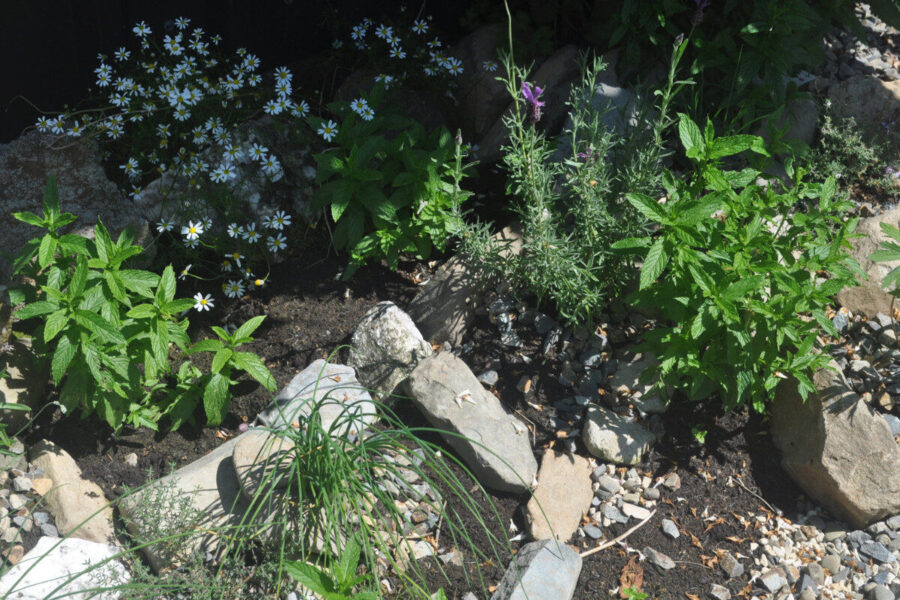
Let’s start with the most obvious first, as stone is often most associated with a rockery of some form. I have a small stone-and-gravel affair by the vegetable garden and polytunnels which works well in a number of ways. It helps to contain pushy plants such as mint and chives, is incredibly low-maintenance, draws in pollinators and provides an attractive habitat for natural pest control allies such as ground beetles, earwigs and spiders.
To create this area, I simply used some weed membrane as a liner, with a layer of gravel and rockets and compost used in the planting pockets for herbs and flowers throughout.
A mini stone raised bed
With larger stones or brick you can make an attractive raised bed. I’m always so impressed by the professionally-built dry stone walls you see, but even a novice can create something lovely. It’s a rather mindful practice sorting through stones to see which fit together in layers, filling the gaps with smaller stones to keep it all stable. With bricks you could also use some mortar to bind them together. It’s perfectly feasible to create something lovely with just a little trial and error, and the sense of satisfaction afterwards is immense. Start small to begin with and if you find this really enjoyable and would like to learn more The Dry Stone Walling Association runs a range of courses to help you on your merry way. www.dswa.org.uk/about-us
As edging for a pathway or border
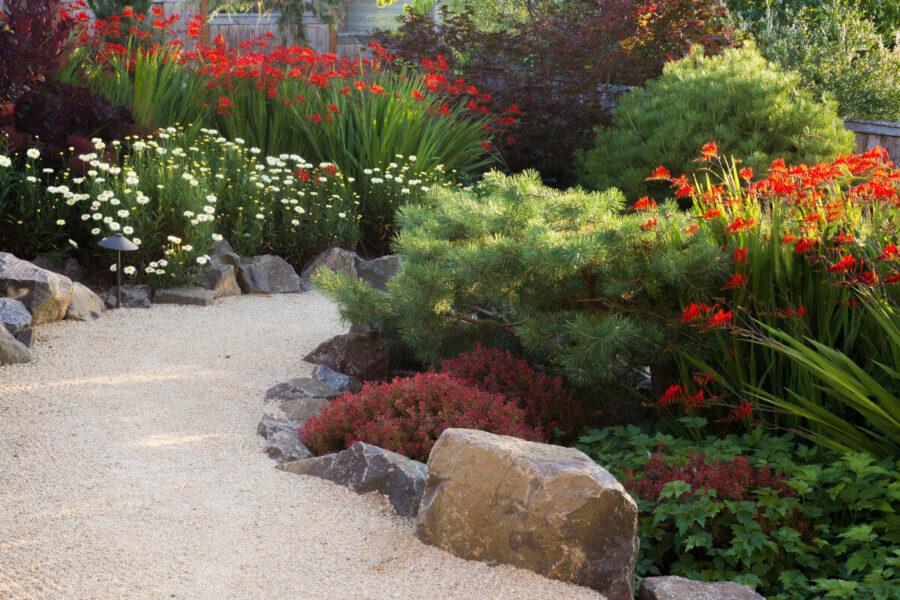
If you have tall plants lining a pathway, the use of stone can help to provide practical support and create a lovely rocky aesthetic. Likewise, borders can benefit from stones placed as an impromptu surround, which creates a further feature and blends well from border to path, grass or bed.
As a mulch around plants and in vegetable beds
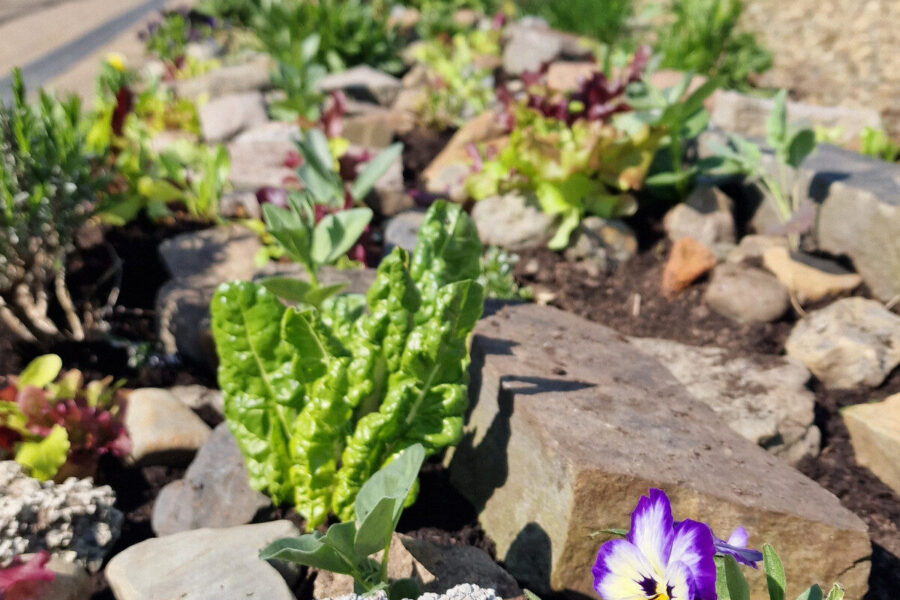
At the Creuddyn community garden I’m only there a few times a month so plants have to be extremely resilient from the off. I help with this by using the stone as a sort of impromptu mulch around the plants early in the season. This helps protect them from the elements, from drying out too much in the sun, or getting too soggy in the case of rain. It also helps raise the temperature of the soil around the plants and provides them with support in the process. As the plants grow and the season progresses, the stone is moved and used elsewhere in the garden. It fills the gaps on the soil, prevents local cats from using the site and also looks very pretty as the plants grow.
TIP Last year was, as we know, a good year for slugs, but not for gardeners, so I’ve been extra vigilant this year when planting out. Although the warm start to the year won’t have been attractive to slugs, I have found a lot more slug eggs than I would normally, as well as young slugs under rocks, so I’ve just been removing them as I go to protect plants. Although stones attract lots of great natural predators, slugs will enjoy the shelter they provide too, so do check them first before using them. Another benefit of the stone is that it makes it easy to find and remove slugs once you know where they like to hide.
Gravel or rubble pathways and beds

I highly recommend the use of these materials as all-weather pathways. They enable you to use a garden no matter the weather without damaging the ground, and as a porous material, water can simply sink away. Also, as I’ve found through experimenting, many plants will grow successfully in gravel. It depends, of course, where you live, and it’s always important to do what works for you, but the blackcurrants, rosemary and lemon balm that line this pathway at the community garden have been thriving the past few years. They have access to compost pockets but they make an attractive, productive and fuss-free feature that has proved very popular.
So do play with stone in your garden as and when you can. It has many uses and there is a real joy to be had channeling the hardy gardeners of yore, pondering how to create something lovely with these marvellous earth-formed materials and to marvel at their creation and how it fits with our place in the wonder of it all.
Find more tips, advice and articles like this at the Amateur Gardening website. Subscribe to Amateur Gardening magazine now

